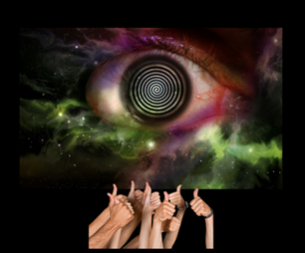Are You Feeling Bored, Frustrated, Unable to Really Help Clients?
Are You Feeling Bored, Frustrated, Unable to Really Help Clients?

How Hypnotherapy Puts Zest Back into Helping People
Therapists, like yourself, sit hour after hour, day after day, week after week, listening to clients who go over and over their problems and why they can’t change. You offer suggestions and they play the “Yes, But Game” telling you why that wouldn’t work. Clients do need to tell their stories, but it’s not the events in their story that are the problem; it is when the story becomes a never-ending repetitive pattern like a mouse on a mouse wheel. The client becomes stuck in this pattern, often clinging to their story as some type of badge of honor. We as therapists may want to ask ourselves, in continuing to listen to their stories, are we contributing to maintaining their repetitive patterns. Eugene Gendlin has done research showing that when we continue to think and talk about a problem, we are actually drawing the same lines heavier, rather than inspiring the painting of a new picture.
It’s no wonder that we as therapists get just as depressed and frustrated as our clients do. Gendlin’s research shows that mindfulness and experiential therapy, such as Heart-Centered Hypnotherapy, provide clients with what he called a felt sense. This is what we as Heart-Centered Hypnotherapists call an epiphany, a breakthrough experience, which takes the client outside of his or her usual mental concepts and catapults them into a completely new awareness. This felt sense is experienced in the body, mind and spirit of the client. The profound part of this is that the therapist also experiences this felt sense with the client. Just as we, as therapists, can empathize with our clients’ pain and anger, we can also co-experience the felt sense of a new paradigm, a complete shift in consciousness that happens in an instant in deep experiential therapies.
Hypnotherapy, Reaching The Mythopoetic Level
Hypnotherapy provides the petrie dish in which felt senses can grow and emerge like a beautiful lotus flower that is developed in the darkness of the muddy river bottom and then emerges as a magnificent orchid-like flower. Just as people can get stuck in their thoughts about their problems, they can also get caught in an endless cycle of emotions. Just because a person is crying or angry, that in and of itself does not indicate healing. These emotions can become part of the repetitive cycle which keeps clients chained to their helplessness or rage. A key ingredient necessary to provide the space for a felt sense is slowing down and sitting in the silence. Hypnotherapy provides just that as both client and therapist must slow down in order to access the trance state. In our Heart-Centered Hypnotherapy model, we move with the client from the story level, down to the emotional level, and then to the mythopoetic or spiritual level. Once those emotions are released, we often just sit quietly and hold a safe space for the client. They are doing deep processing where words are not important; in fact they get in the way. Words are often inadequate to describe the depth of the awakening the client is experiencing at such a time.
The Subconsicious and Dreams
A felt sense, as described by Gendlin, needs to just emerge. It is an intricate whole that encapsulates the entire set of life situations the client is addressing on this very deep level. This is all happening below the conscious mind/ thought level, often below the subconscious level and even into the collective unconscious level. This is why, we ask clients to write down their dreams (without interpretation) after sessions since many images and symbols come to them. The felt sense then is processed so deeply, that perceptions of one’s life and situations change, seemingly miraculously! It is like a picture that is worth a thousand words, an intricate puzzle where the pieces just suddenly fall into place to reveal a whole new perspective for the client as well as the therapist!
This is why after a profound hypnotherapy session, we do not talk about the experience with the client, but rather we ask them to sit for a while in the waiting room and journal. We ask them to go for a walk and not speak to anyone but just to incorporate the experience into every cell of their body. Then, on their next appointment, we are open, if they wish, to verbally explore their new awareness.
There is no need for client or therapist to become bored, discouraged or even disenfranchised by the therapeutic process. Deep, experiential hypnotherapy provides a new model, a profound paradigm that sets the stage for personal transformation for both therapist and client who wish to engage on a journey of illumination.









